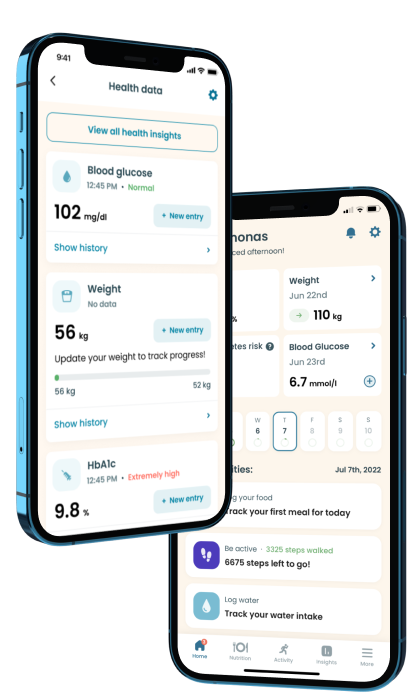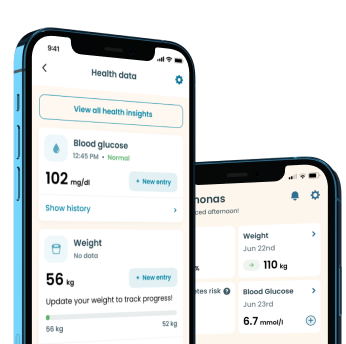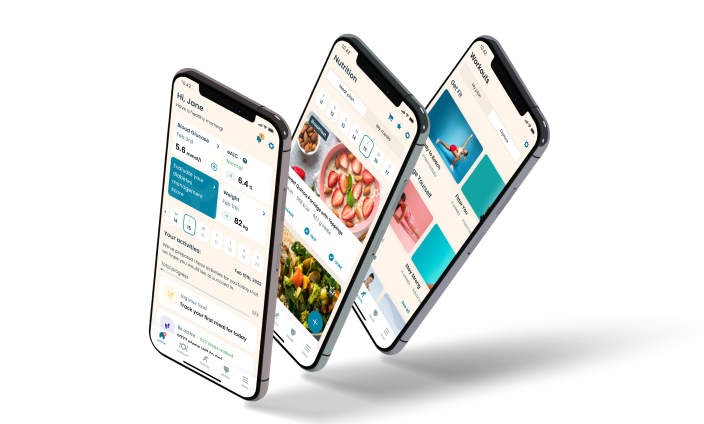A Close Look at the Relationship Between Grapes and Diabetes

46
79 kcal
Diabetes is a disease that requires careful attention to diet in patients, and many questions abound regarding what contributes to a healthy diet. Essentially, diabetics are advised to avoid specific food types while taking more of others. Fruits are believed to contain sugar in large quantities, which can eventually spike blood sugar levels, explaining why many patients tend to avoid them in their diet.
Fortunately, myths surrounding fruits and diabetes have been debunked. Indeed, fruits are safe and are an essential menu item on the diabetes diet. To nudge you in the right direction, fruits with low GI scores are the most recommended as they help control blood sugar levels. On the flip side, you should steer clear of those with high glycemic index scores if you have diabetes.
Grapes have been around for quite a while, as far back as 6,500 BC. In recent times, it’s proven to be one of the people’s favorite fruits. That’s not just because grapes are excellent for making delicious wines; they also offer several health benefits. Namely, they’re rich in essential nutrients like fiber, vitamins, etc., which significantly benefit diabetics.
This guide covers excellent details about grapes and their importance in a diabetic’s diet. You’ll discover some valuable nutrients contained in grapes and how they influence the health of people with diabetes. And, of course, you’ll find out the best way to include these delicious pieces of fruits into your diet.
Nutritional value
- Protein 0.72 g
- Carbohydrate 17.39 g
- Fat 0.72 g
- Fiber 0.7 g
- Sugar 16.67 g
- Cholesterol 0 g
Why Grapes Are Great for Diabetics
Grapes are excellent fruits with numerous benefits to the average man. However, some of its effects are somewhat specific to diabetics, as we’ll observe below.
Low Glycemic Index
To get ahead of diabetes, patients need to watch their diet and its impact on blood sugar levels. One way to figure this out is by using the glycemic index — a scale that ranges from 0 to 100, measuring how much a particular food makes your blood sugar rise. To put things into perspective, a food with a GI score of 70 and above will quickly result in a spike in blood sugar, while one with a score of 55 and below will barely have an impact.
Other factors like glycemic load and how much you eat also influence how the food affects your blood sugar. Glycemic load indicates how much sugar per serving will increase blood sugar. People with diabetes are advised to populate their diet with foods with a relatively low glycemic index and load. According to Harvard Health Publishing, foods containing more fiber and fat tend to have low GI scores.
Grapes have a glycemic index of 53, which is considered relatively low. Hence, people with diabetes can enjoy grapes in moderate quantities without worrying about blood sugar spikes. Much of this low GI score is associated with grapes’ richness in fiber.
Contains Antioxidants
Our body produces free radicals naturally and regularly; they’re released as by-products of cell metabolism. However, they can also stem from external sources like radiation, smoking, air pollution, industrial chemicals, etc.
Antioxidants play an essential role in stabilizing free radicals in the body. When there aren’t enough antioxidants to keep these free radicals in check, oxidative stress occurs.
This triggers several unwanted reactions that can cause significant damage to DNA and increase the risk of other illnesses. This is terrible news for people with diabetes, as oxidative stress can increase the risk of developing heart disease.
Fruits like grapes that are rich in antioxidants are essential for diabetics. These chemicals are primarily found in the seed and skin of grapes.
Each variety of grapes has varying levels of antioxidants. Concord and purple grapes hold the highest amount of antioxidants. Anthocyanin, a compound that gives grapes their color, is also an antioxidant that regulates free radicals in the body.
Finally, eating grapes is a great way to lower the risk of complications like heart disease or retinopathy.
Rich in Fiber
Carbohydrates tend to be detrimental to a diabetic’s health, especially when consumed in large quantities. However, not all carbohydrates are bad and should be avoided; as a diabetic, you might need more of certain carbs.
Fiber, a type of carbohydrate, is regarded as the healthy carb, or famously known as “the good carb.” Several studies link fiber to a reduction in the risk of developing type 2 diabetes.
Fiber has several health benefits, especially for people with diabetes. Indeed, they have superpowers for lowering blood pressure, controlling blood sugar levels, reducing cholesterol, etc.
Dietary fiber is majorly found in plant-based foods like vegetables and fruits. A high concentration of this carb exists in fruit skins, so it’s recommended you eat them whole. On the contrary, fruit juice isn’t a great alternative as all the fiber is eliminated during production.
Get a good dose of fiber by eating fruits like grapes, apples, strawberries, etc., that are rich in essential fiber. It stays longer in the stomach, making you feel full for a while. This, in turn, helps with weight management as you’re less likely to consume more food than you need.
Fiber also makes your bowel operate at optimal conditions, lessens or removes bad cholesterol, and slows down sugar absorption. You just can’t get enough of this nutrient.
Anti-Inflammatory Properties
Ever been bitten by a bug or had a rash? You notice how areas around this bite tend to swell and sometimes bring pain. This is a typical example of inflammation.
Inflammation also occurs in people with diabetes, except that it’s internal this time. Inflammation is more common in people with type 2 diabetes. Namely, excess fat induces the body to secrete chemicals like cytokines, causing inflammation.
Research on “The Role of Inflammation in Diabetes” concluded that anti-inflammatory combined with other treatments could potentially lead to the permanent cure of type 1 diabetes. This shows the significant role that anti-inflammatory chemicals play in battling diabetes.
Anthocyanins are chemical compounds commonly found in fruits and vegetables. They possess anti-inflammatory properties vital to the health of a diabetic. Luckily, this type of chemical is abundant in grapes.
Reduces Cholesterol
There exists a seemingly odd relationship between cholesterol and diabetes. Too much LDL cholesterol (“bad” cholesterol) can cause several health issues. Namely, they lead to the narrowing of arteries which can cause strokes. Similarly, too little HDL cholesterol (“good” cholesterol) can also be detrimental to a diabetic’s health.
Recent studies indicate that high cholesterol can lead to cardiovascular disease in patients with diabetes. It’s also been associated with high blood pressure. Therefore diabetics need to keep their cholesterol levels in check.
Polyphenol in grapes has so many beneficial properties, including regulating blood cholesterol. Fresh fruits also contain flavonoids, resveratrol, anthocyanins, potent antioxidants, and pack antimicrobial properties. Remarkably, studies prove that consuming red grapes reduces LDL cholesterol, helping to abate its associated complications.
Lowers Blood Sugar
One thing dreaded by most diabetics is sugar, or, let’s say, too much of it. Sugar in itself is essential for the body system. However, issues begin to arise when too much of it is in the body.
While getting more exercise and reducing carb intake can help achieve blood sugar control, eating fruits is another effective way to do this. Nutrients like fiber and other compounds found in these fresh fruits help control blood sugar.
Grapes contain fructose — one of the simple sugars known to cause little to no spikes in blood sugar. Consuming grapes in moderate quantities will also help control blood glucose levels. Resveratrol, a compound present in grapes, helps with this.
Likewise, dietary fiber found in grapes also slows down the rate at which our body absorbs sugar.
Regulates Blood Pressure
High blood pressure is quite common among diabetics. According to John Hopkins Medicine, about 67% of diabetic adults have blood pressure readings of beyond 130/80 mmHg or take hypertension medications. If left unattended, it eventually leads to more chronic illnesses like stroke or heart disease. Hence, maintaining averagely normal blood pressure is vital for a diabetic.
You can maintain relatively normal blood pressure by exercising, watching your weight, and taking less sugar. Grapes can also play an essential role in ensuring your blood pressure stays in check. It contains potassium — a mineral tasked with the responsibility of reducing blood pressure.
Take a quiz
Discover what Klinio app can do for you
Healthy diabetes meal plan crafted just for YOU

Personalized workouts with no equipment needed

Track your progress with smart tracking tools

Other Essential Benefits Grapes Offer
Grapes help the body in various other ways. Below are other benefits you get to derive from eating it.
- Aids digestion
- Improves eyesight by preventing the retina from deteriorating
- Helps reduce insulin resistance by enhancing insulin sensitivity
- Significantly improves cardiovascular health
- Prevents Alzheimer’s disease, dyslipidemia, and hypertension
- Possess anti-aging properties
Fresh, Dried, Canned, or Frozen Fruit?
Do you love those raisins (dried grapes)? They’re crunchy and quite delicious. Or do you prefer your grapes frozen or canned?
Technology has made it easier to have our fruits in various forms. However, when fixing foods on a diabetes meal plan, some choices might not be the best.
Dried fruits have most of their water content taken out to preserve them for longer. While canned fruits are processed, sealed, and heated within hours of harvesting. Frozen fruit is simply a fresh fruit thrown into the freezer.
Studies indicate that there’s not much difference between fresh fruits and dried ones. Although the latter may present reduced quantities of some essential nutrients like vitamin C, they still contain most of the nutrients beneficial to the body system.
Dried fruits like raisins contain just as much fiber as fresh grapes. They’re also rich in antioxidants, potassium, etc. These play important roles in a diabetic’s health.
Frozen fruit retains much of its nutrients and can be an alternative to fresh fruits. On the other hand, canned fruit needs a careful evaluation before incorporating it into a diabetes diet. Most canned foods contain added sugar or salt, which might make them unfit for diabetics.
So, whether you like your grapes fresh, frozen, or dried, you still get many of the same benefits. However, some dried fruits can also be coated with or have added sugars. Summarily, when it comes to making a choice, whole fruit is a healthy option.
How to Enjoy Grapes Better
Fitting grapes into your diet shouldn’t be much of a hassle. However, you can seek counsel on the appropriate meal plan from a health professional. Here are some ways you can better enjoy grapes in your diet.
Try freezing them.
You can enjoy grapes better by freezing them as it turns them into more exciting snacks. You can even throw some into sparkling water.
Blend them.
Sometimes, the best way to get most of these fruits is to make a smoothie. Get some strawberries and other fruits like bananas, apples, and strawberries. Throw them into the blender and enjoy your delicious smoothie.
Add some cheese.
It’s always a great idea to mix some protein with your grapes. Grapes contain a good amount of carbohydrates, so adding cheese allows you to balance things up by upping your protein intake.
Summing It Up
Diabetics need to take proper note of their fruit consumption. Knowing exact details (like sugar content, essential nutrients, etc.) about your favorite fruits will go a long way in determining if it fits your meal plan. This detailed guide has carefully examined grapes, their nutritional contents, and how they benefit diabetics.
Grapes offer excellent benefits for diabetics, including managing insulin levels and reducing insulin resistance, preventing complications that might result from high blood pressure, maintaining blood sugar levels, and more. However, ensure you eat grapes in moderation — 32 grapes or a tablespoon of raisins is enough for one serving, according to Diabetes UK. Also, avoid fruit juice and canned or dried fruits with added sugar.
Checking with your healthcare professional is also vital in determining which fruits you should consume. However, another great way to do this is by using digital meal planners. For example, our expert-recommended app, Klinio, is a top management app specifically tailored to aid diabetics in maintaining a healthy lifestyle. Notably, you get access to easy workout routines for weight loss, great meal plans just right for you, and a robust and resourceful information hub, among others.

Download Klinio app!
Get more by downloading our free Klinio App. Analyze your health, form new habits and manage your diabetes anytime, anywhere.
OR
SCAN QR CODE



GET THE APP


